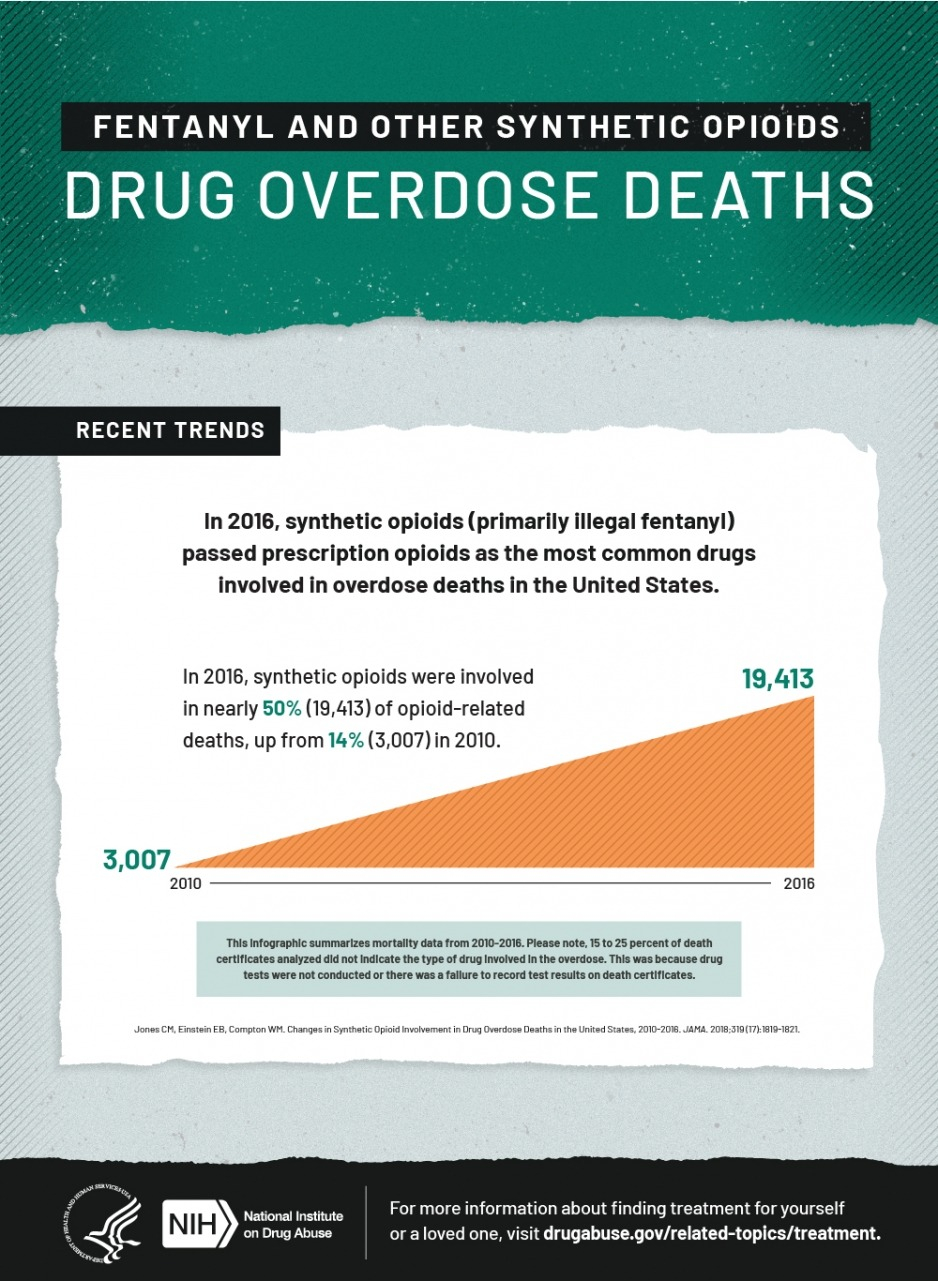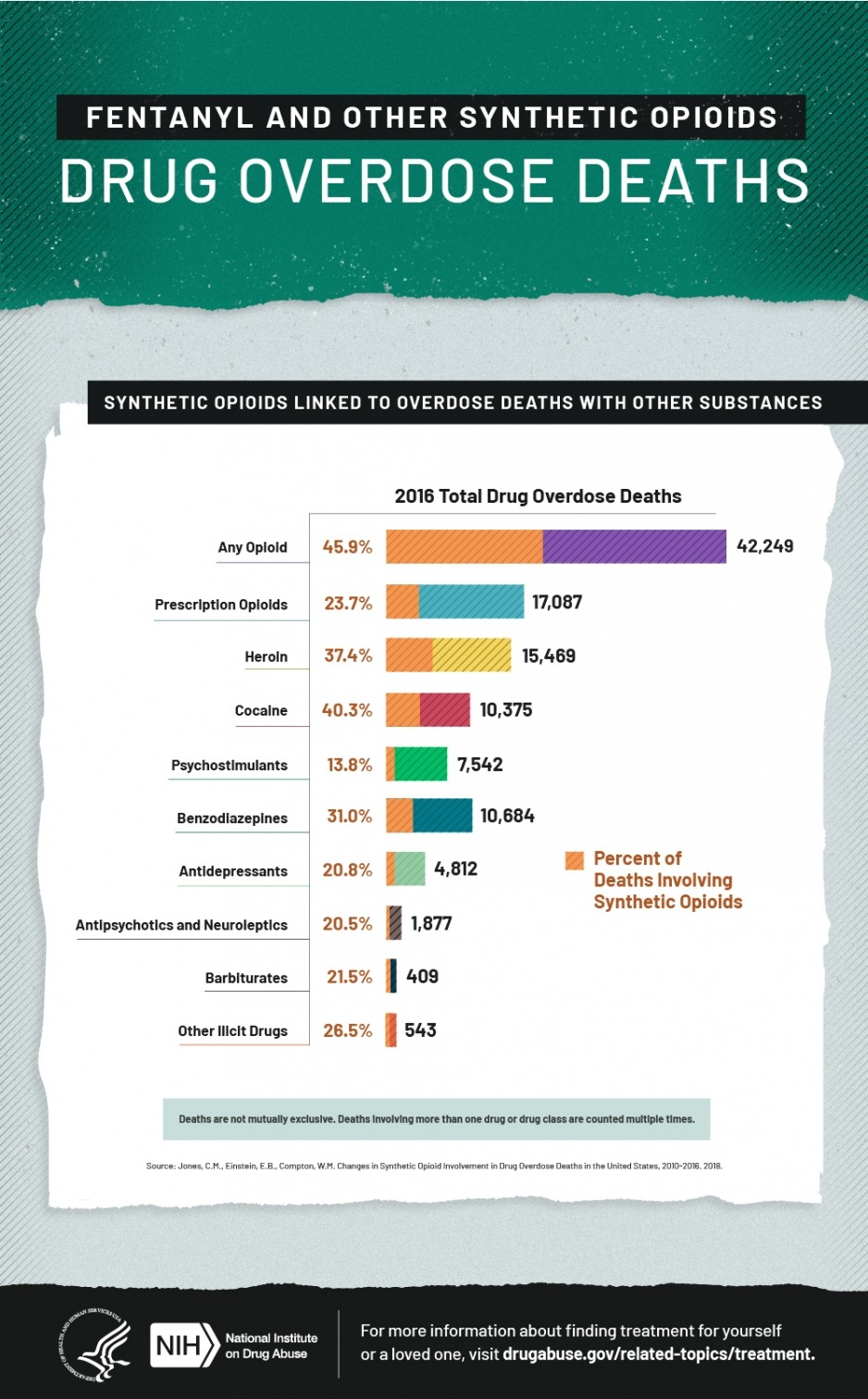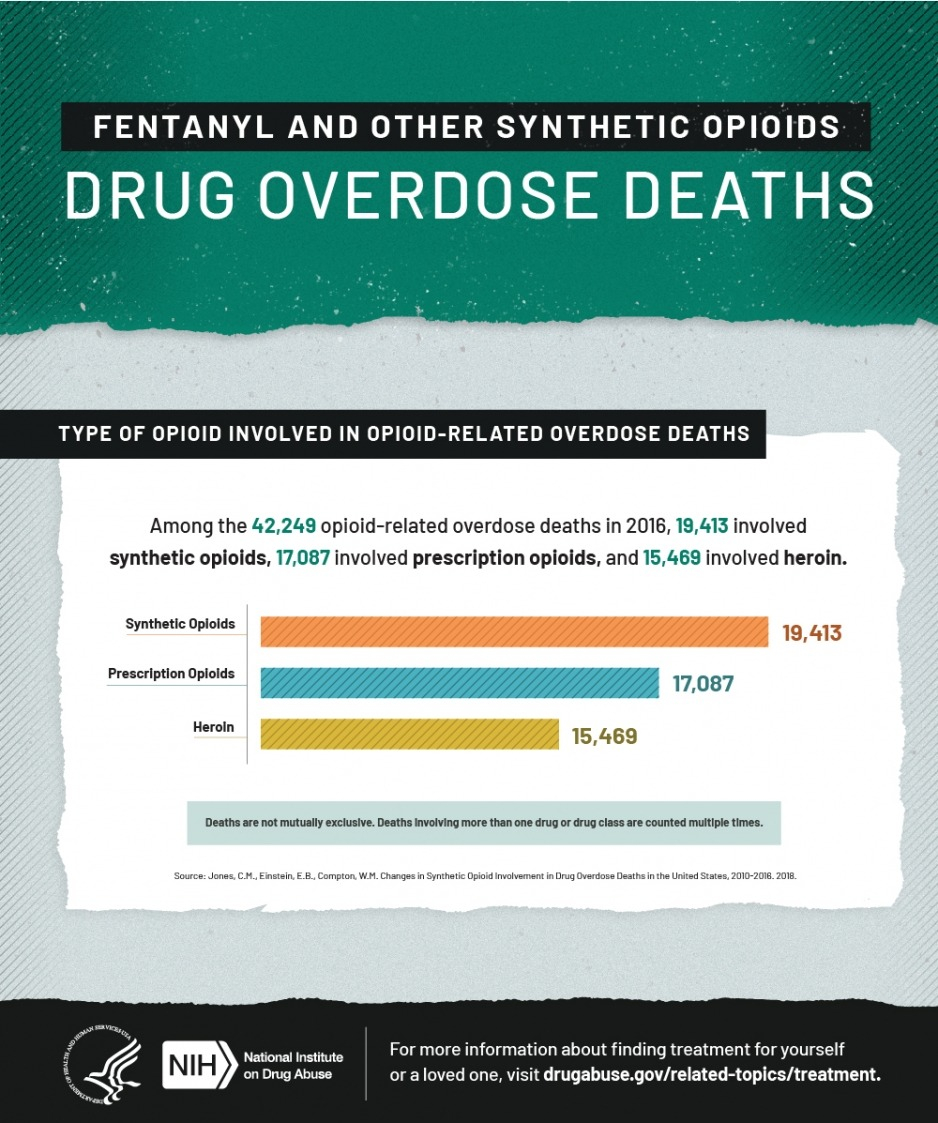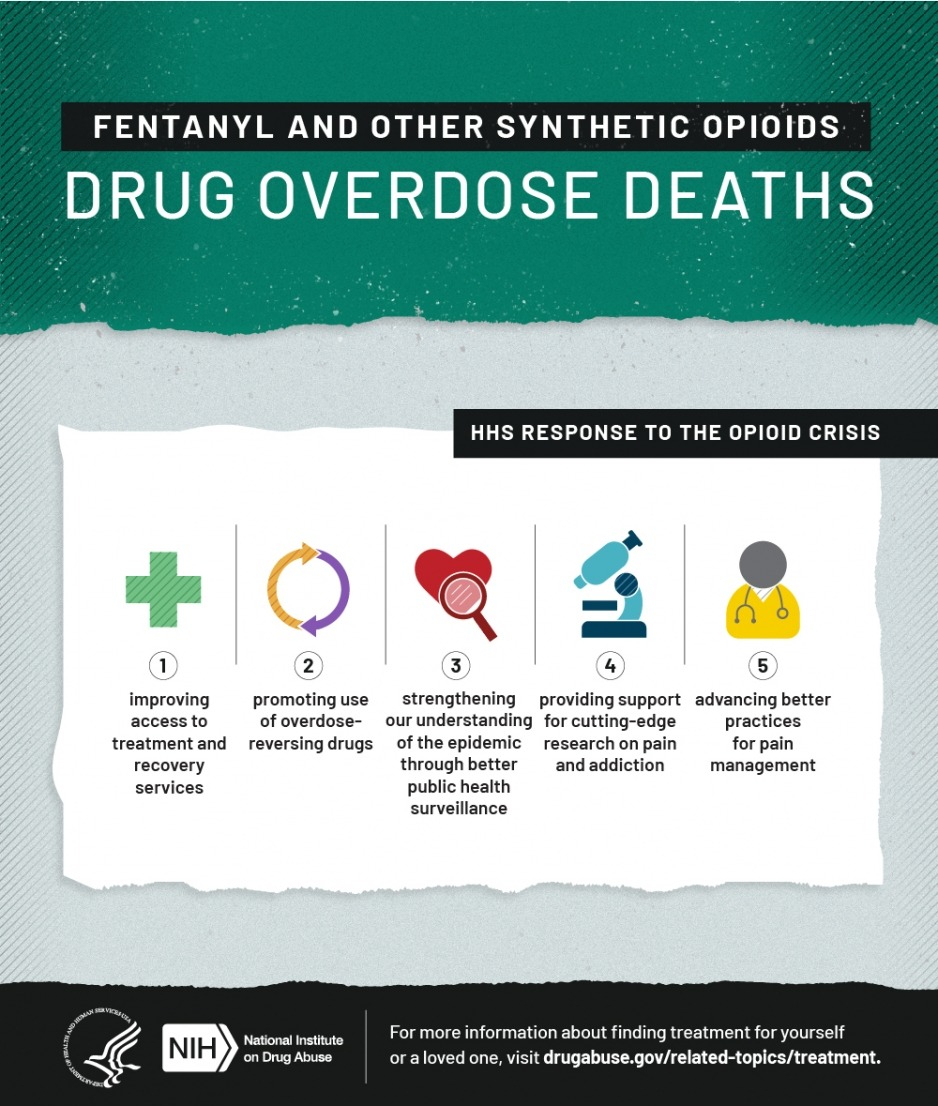This infographic summarizes a study that finds that nearly half of opioid-related overdose deaths involve fentanyl.
Figure 1: Recent Trends
In 2016, synthetic opioids (primarily illegal fentanyl) passed prescription opioids as the most common drugs involved in overdose deaths in the United States.
In 2016, synthetic opioids were involved in nearly 50% (19,413) of opioid-related deaths, up from 14% (3,007) in 2010.
*This infographic summarizes mortality data from 2010-2016. Please note, 15 to 25 percent of death certificates analyzed did not indicate the type of drug involved in the overdose. This was because drug tests were not conducted or there was a failure to record test results on death certificates.
Figure 2: Synthetic Opioids Linked to Overdose Deaths with Other Substances
In 2016, 42,249 drug overdose deaths involved opioids. Of those, 45.9% involved synthetic opioids. 17,087 overdose deaths involved prescription opioids. Of those, 23.7% involved synthetic opioids. 15,469 overdose deaths heroin. Of those, 37.4% involved synthetic opioids. 10,375 overdose deaths involved cocaine. Of those, 40.3% involved synthetic opioids. 7,542 overdose deaths involved psychostimulants. Of those, 13.8% involved synthetic opioids. 10,684 overdose deaths involved benzodiazepines. Of those, 31.0% involved synthetic opioids. 4,812 overdose deaths involved antidepressants. Of those, 20.8% involved synthetic opioids. 1,877 overdose deaths involved antipsychotics and neuroleptics. Of those, 20.5% involved synthetic opioids. 409 overdose deaths involved barbiturates. Of those, 21.5% involved synthetic opioids. 543 overdose deaths involved other illicit drugs. Of those, 26.5% involved synthetic opioids.
*Deaths are not mutually exclusive. Deaths involving more than one drug or drug class are counted multiple times.
Figure 3: Type of Opioid Involved in Opioid-Related Overdose Deaths
Among the 42,249 opioid-related overdose deaths in 2016, 19,413 involved synthetic opioids, 17,087 involved prescription opioids, and 15,469 involved heroin.
*Deaths are not mutually exclusive. Deaths involving more than one drug or drug class are counted multiple times.
Figure 4: HHS Response to the Opioid Crisis
HHS is committed to:
- improving access to treatment and recovery services
- promoting use of overdose-reversing drugs
- strengthening our understanding of the epidemic through better public health surveillance
- providing supporting for cutting-edge research on pain and addiction
- advancing better practices for pain management
For more information about finding treatment for yourself or a loved one, visit drugabuse.gov/related-topics/treatment.
References:
Jones CM, Einstein EB, Compton WM. Changes in Synthetic Opioid Involvement in Drug Overdose Deaths in the United States, 2010-2016. JAMA. 2018;319(17):1819-1821.
This publication is available for your use and may be reproduced in its entirety without permission from NIDA. Citation of the source is appreciated, using the following language: Source: National Institute on Drug Abuse; National Institutes of Health; U.S. Department of Health and Human Services.




